If your rubber plant‘s leaves are wilting, drooping, or yellowing, it’s a sign that your plant is thirsty and needs more water. In this article, we’ll show you the signs of an underwatered rubber plant and how to revive it.
Why does a Rubber plant get dehydrated?
A rubber plant can become dehydrated for a number of reasons, including not being watered enough, being in a pot that is too small, or being in a location that is too hot or too dry. If your rubber plant is showing signs of dehydration, such as wilting leaves or stems, dry soil, or yellowing leaves, there are a few things you can do to revive it.
If the pot is too small, transplant the plant into a larger pot with fresh potting mix. If it is, water the plant thoroughly, making sure to saturate the soil. First, check the soil to see if it is dry. You may also need to increase the frequency of watering, especially if the plant is in a location that is very hot or dry.
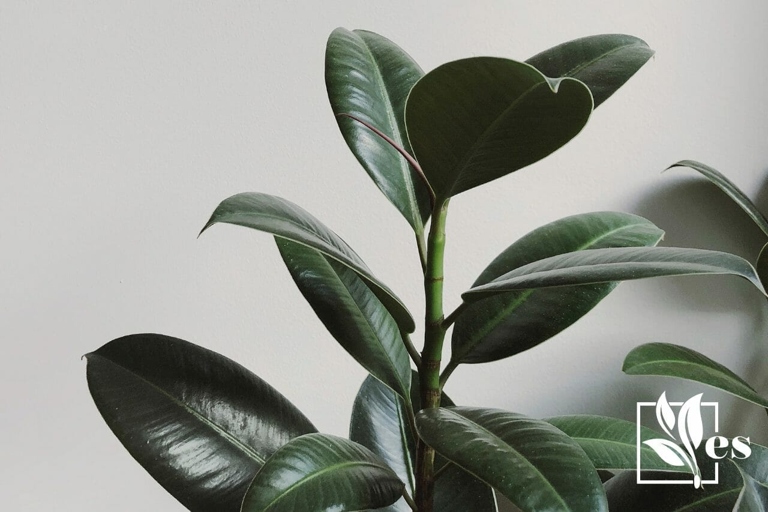
If the leaves of your rubber plant are yellowing, this could be a sign of too much water, not enough light, or a nutrient deficiency. Try to increase the amount of light the plant is getting, and make sure you are not overwatering it. If the leaves are still yellowing, you may need to fertilize the plant with a balanced fertilizer.
Rate of Watering
How often you need to water your rubber plant depends on the plant’s size, the type of pot it’s in, and the climate. In general, small plants in pots need to be watered more often than large plants in pots. If you notice your rubber plant’s leaves drooping, it’s a sign that the plant is thirsty and needs to be watered.

If the soil is dry, it’s time to water the plant. If the soil is still moist, wait a few days before watering. If you’re not sure how often to water your rubber plant, check the soil before watering.
Allow the water to soak into the soil and then empty any excess water from the saucer. Once you’ve determined that your rubber plant needs water, water it thoroughly. Be sure to not overwater your rubber plant, as this can lead to root rot.
Changing Seasons
These changes can cause the leaves to droop and the plant to look wilted. When the seasons change, so does the amount of sunlight and temperature changes that your rubber plant experiences. If you think your rubber plant is underwatered, here are a few signs to look for:
-The leaves are drooping or wilting
-The leaves are turning yellow or brown
-The plant is not growing as quickly as it normally does
If you think your rubber plant is underwatered, there are a few things you can do to revive it.
-First, check the soil to see if it is dry. If it is, water the plant thoroughly.
-If the soil is not dry, try misting the leaves with water.

-If the plant is still not looking better, you can try moving it to a location with more humidity, such as a bathroom.
Plant Size
The ideal size for a rubber plant is somewhere in between these two extremes. When it comes to rubber plants, size does matter. A rubber plant that is too big will be unable to support its own weight and will eventually collapse. A rubber plant that is too small will not be able to produce the latex that is necessary for its survival.
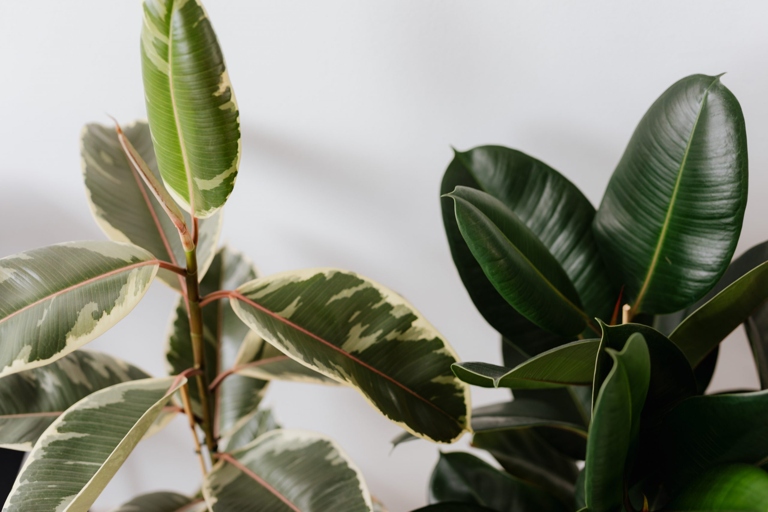
If you catch the problem early enough, you can revive your rubber plant by giving it a good watering. When a rubber plant is underwatered, its leaves will begin to droop and its stem will start to sag. However, if the plant has been underwatered for too long, it will not be able to recover and will eventually die.
With a little care and attention, your rubber plant will thrive and reach its full potential. If you notice that your plant is starting to droop, water it immediately. To prevent your rubber plant from becoming underwatered, make sure to water it regularly and give it plenty of sunlight.
Type of Pot
But how do you know what type of pot to use for your rubber plant? If you notice your rubber plant’s leaves drooping and curling, it’s a sign that the plant is thirsty and needs more water.

Plastic pots are the most popular choice because they’re lightweight and inexpensive. There are two main types of pots for rubber plants: plastic and clay. However, clay pots are a good choice for rubber plants because they help to regulate the plant’s water intake.
Allow the soil to dry out in between waterings. When it comes to watering your rubber plant, it’s important to use lukewarm water and to water the plant deeply but not too frequently. If you notice the leaves of your rubber plant turning yellow, it’s a sign that you’re overwatering the plant.
If you think your rubber plant is underwatered, give it a good drink of water and then check the soil to see if it’s dry. If the soil is wet, the plant doesn’t need any more water. If the soil is dry, the plant needs more water.
Humidity Level
If your rubber plant is wilting, drooping, or its leaves are yellowing or falling off, it’s likely that it’s not getting enough water. If the air in your home is too dry, your rubber plant will suffer. Rubber plants are native to tropical regions and prefer high humidity levels.

First, try grouping it with other plants. With a little extra care, you can get your rubber plant back to its healthy self in no time. This will create a mini-environment with higher humidity levels. There are a few things you can do to increase the humidity around your rubber plant. You can also try setting your plant on a pebble tray or misting it with water regularly.
Room Temperature
Room temperature is one of the most important factors in keeping your rubber plant healthy. The ideal temperature for a rubber plant is between 65 and 75 degrees Fahrenheit. If the temperature is too cold, the plant will become dormant and may even die. If the temperature is too hot, the plant will become stressed and may drop leaves.
Dry Soil
Here are a few tips on how to revive your rubber plant: If your rubber plant’s leaves are drooping and the soil is dry, it’s a sign that your plant is thirsty and needs more water.
Water your plant once a week, making sure to water it deeply so that the water reaches the roots. Water your plant deeply and regularly. 1.
Check the soil before watering. Before watering your plant, stick your finger into the soil to check if it’s dry. If the soil is dry, water your plant. 2.

Use a moisture meter. 3. A moisture meter can help you determine how much water your plant needs.
Fertilize your plant. Fertilizing your rubber plant will help it recover from drought conditions. 4.
Move your plant to a different location. If your plant is in a spot that gets a lot of sun, move it to a shadier spot. 5.
Signs of Underwatered Rubber Plant
If you see any leaves that are brown or yellow, you can remove them to help the plant focus its energy on new growth. The best way to revive your rubber plant is to give it a good soaking in a sink or tub of lukewarm water. If your rubber plant is wilting, drooping, or its leaves are turning yellow or brown, it’s a sign that it’s not getting enough water. Let the plant soak for 30 minutes to an hour, then drain it and place it back in its pot.
Rubber Plant Drooping
The leaves will start to droop and the stems will start to sag. If your rubber plant is drooping, it’s a sign that it’s not getting enough water. If you see these signs, water your plant immediately.
You can also mist the leaves to help keep them hydrated. When you do water it, make sure to soak the soil completely. If your plant is really dry, you may need to water it more than once a week.

In that case, you may need to give it some extra TLC to help it recover. If your plant is drooping from lack of water, it will likely recover quickly once you start watering it more frequently. However, if it’s been neglected for a long time, it may not bounce back as easily.
Rubber Plants have Brown Tips
If it is, water your plant thoroughly. If the soil is still moist, you may need to adjust your watering schedule. The first step is to check the soil to see if it’s dry. If your rubber plant has brown tips, it’s a sign that it’s not getting enough water.

If the soil is too dry, the plant will start to wilt and the leaves will turn brown. Rubber plants are drought-tolerant, so they don’t need a lot of water. However, they do need enough to keep the soil moist.
If you think your plant is underwatered, give it a good watering and then check the soil again in a few days. If the soil is still dry, you may need to water it more frequently. Once the soil is moist, the plant should start to recover.
Brown and Dry Leaf Edges
If you see this happening, water your rubber plant immediately and make sure to water it more frequently in the future. If the leaves are already dead, you can trim them off to improve the plant’s appearance. With proper care, your rubber plant will soon be looking healthy and green again. If you notice that your rubber plant’s leaves are brown and dry at the edges, it’s a sign that the plant is not getting enough water.
Leaves Turning Yellow
If the leaves are only slightly yellow, you can try watering the plant more often. To revive a dry rubber plant, water it thoroughly and then place it in a bright, sunny spot. If your rubber plant’s leaves are turning yellow, it’s a sign that the plant is not getting enough water. If the leaves are very yellow or brown, it’s a sign that the plant is already too dry and needs to be watered immediately. The leaves will turn yellow starting at the bottom of the plant and working up.
Rubber Plant Leaves Curling
If you see this happening, water your rubber plant immediately. Allow the plant to drain and then discard any excess water. If the leaves are already dry and crispy, you can try to revive the plant by giving it a deep watering. The leaves will curl in an attempt to conserve water. If your rubber plant’s leaves are curling, it’s a sign that the plant is underwatered. Be sure to water the plant until water runs out of the drainage holes.
Dry Brown Spots on the Leaves
If you notice dry brown spots on the leaves of your rubber plant, it is a sign that the plant is not getting enough water. If you see this happening, you need to water your rubber plant more frequently. The leaves will become dry and crispy, and eventually fall off the plant.

Allow the plant to drain for a few minutes, then water again. To revive a rubber plant that is showing signs of being underwatered, start by giving it a deep watering. Repeat this process until the plant is hydrated. Water the plant until the water runs out of the drainage holes at the bottom of the pot.
Potting Soil is Dry
If you catch the problem early, you can revive your rubber plant with some water. If the potting soil your rubber plant is growing in feels dry to the touch, it’s time to give your plant a drink. Underwatered rubber plants will start to droop, and the leaves will turn yellow.
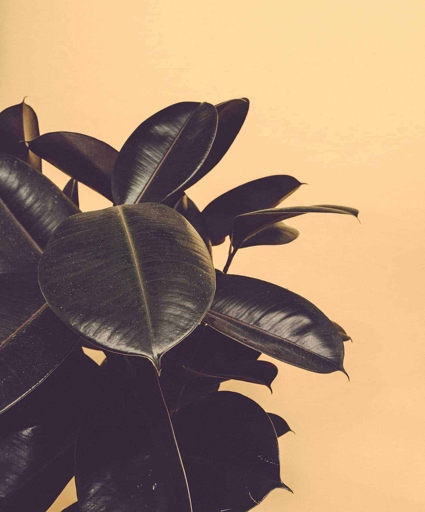
To water your rubber plant, give it a good soaking until water runs out of the drainage holes. Allow the top inch of soil to dry out before watering again. Be sure to empty any water that collects in the saucer under the pot.
Allow the top inch of soil to dry out before watering again. Give it a good soaking and be sure to empty any water that collects in the saucer under the pot. If your rubber plant is looking wilted and its leaves are turning yellow, it’s probably due to lack of water.
Brittle Roots
You may need to water the plant more frequently if the soil dries out quickly. The first step is to check the soil to see if it’s dry. If the problem persists, you may need to replant the rubber plant in a pot with fresh, moist soil. If you notice your rubber plant’s leaves are drooping and the stems are brittle, it’s a sign that the plant is not getting enough water. If it is, water the plant thoroughly, making sure to get the water to the roots.
Is my Rubber Plant under or over-watered?
To revive your plant, water it thoroughly and then allow the soil to dry out completely before watering again. If your rubber plant is wilting, drooping, or its leaves are yellowing, it’s likely that it’s underwatered. If your plant is still not looking its best, you may need to repot it in fresh, well-draining soil.
Identifying the Causes of Underwatering
While overwatering is a more common cause of plant death, underwatering is also a common problem. Other signs include yellowing leaves, browning edges, and dry, crispy leaves. If you notice your rubber plant’s leaves drooping and curling, it’s likely a sign of underwatering.
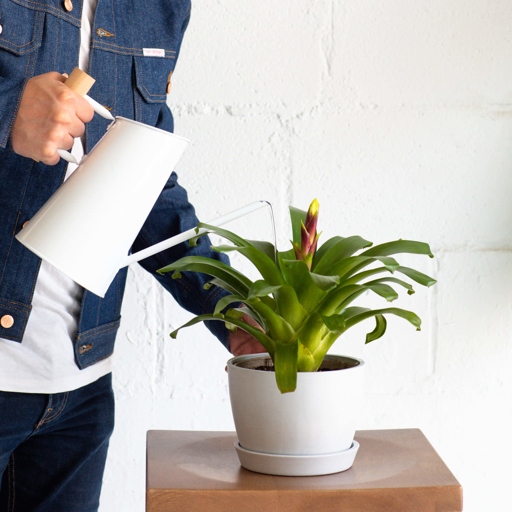
Another possibility is that your plant is in a pot that’s too small. If you’re forgetful or busy, it’s easy to let your plant go too long without water. A plant that’s pot-bound will need water more often than one that has plenty of room to grow. There are a few possible causes of underwatering. Finally, the temperature and humidity of your home can affect how often your plant needs water. If it’s particularly hot or dry, your plant will need more water than usual. One is simply not watering your plant enough.
If you think your plant is underwatering, the first step is to check the soil. If your plant is still showing signs of stress, you may need to repot it into a larger pot. If it’s dry several inches down, it’s time to water. Be sure to water deeply, until water runs out of the drainage holes in the bottom of the pot.
Irregular watering
Irregular watering is one of the most common reasons why houseplants die. If you’re noticing that your rubber plant’s leaves are wilting, drooping, or turning yellow, it’s likely a sign that it’s not getting enough water.
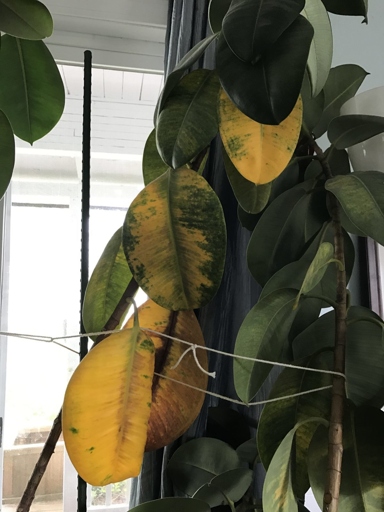
Be sure to give it a good soaking, until water starts to drain from the bottom of the pot. If you think your rubber plant is underwatered, the first step is to check the soil. If it’s dry to the touch, it’s time to water your plant.
If your rubber plant is already wilted, you can try to revive it by giving it a deep watering. Place the plant in the sink or bathtub, and water it until the soil is completely saturated and water is coming out of the drainage holes.
But with regular watering, you can keep your rubber plant healthy and thriving for years to come. If your rubber plant is beyond the point of revival, you’ll need to start over with a new plant.
Solution
Here are a few signs that your rubber plant is underwatered: If your rubber plant is looking a little wilted, it may be due to lack of water.
The leaves are drooping or wilting.
The leaves are dry or crispy.

The leaves are yellowing.
If you think your rubber plant is underwatered, the best solution is to give it a good watering. If the leaves are still wilted after watering, you can mist them with water to help them perk up. Water the plant until the soil is saturated and water is coming out of the drainage holes.
Poor Soil Water Holding Capacity
The first step is to check the soil to see if it’s dry. If you notice your rubber plant’s leaves drooping, it’s likely a sign of dehydration. If the soil is dry, water your plant thoroughly and wait to see if the leaves perk up. If they don’t, the problem may be poor soil water holding capacity.
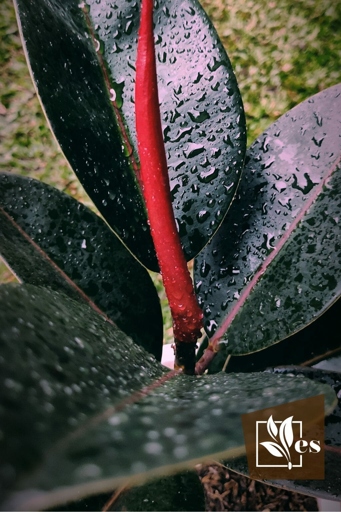
When soil has poor water holding capacity, it means that it doesn’t retain moisture well. This can be due to a number of factors, including low organic matter content, high clay content, or compacted soil. If you suspect your soil has poor water holding capacity, you can improve it by amending it with organic matter or by aerating it.
Solution
If your rubber plant is looking a little under the weather, don’t despair. There are a few simple things you can do to revive it.
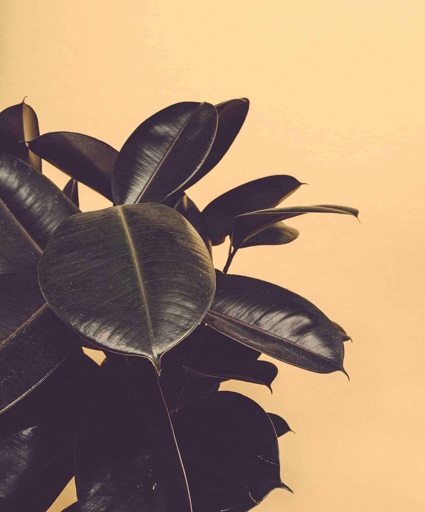
First, check the soil. If the soil is soggy, however, it’s best to let it dry out a bit before giving it another drink. If it’s dry, give the plant a good watering.
You can do this by misting the leaves or setting the plant on a pebble tray. If they’re droopy or yellowing, it’s a good idea to give the plant some extra humidity. Next, take a look at the leaves.
If your plant is in a low-light spot, try moving it to a brighter location. Rubber plants prefer bright, indirect light. Finally, make sure your plant is getting enough light.
With a little TLC, your rubber plant will be back to its happy, healthy self in no time.
Nitrogen Toxicity
If your rubber plant is wilting, drooping, or looking generally unhealthy, it may be a sign of nitrogen toxicity. With proper care, your rubber plant should recover quickly. Nitrogen is an essential nutrient for plants, but too much of it can be harmful. If you think your plant is suffering from nitrogen toxicity, stop fertilizing it and flush the soil with water to remove any excess nitrogen. Symptoms of nitrogen toxicity include yellowing leaves, stunted growth, and leaf drop.
Solution
There are a few simple solutions that can help revive your plant and get it back to its healthy self. If your rubber plant is looking a little under the weather, don’t despair.
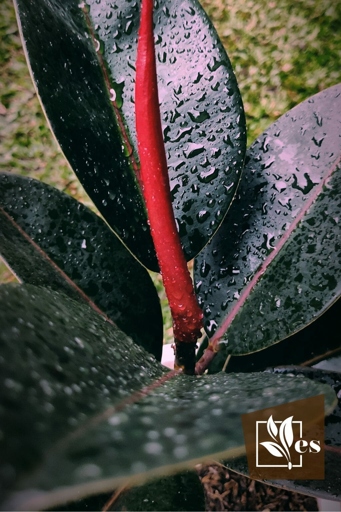
First, check the soil. Be sure to give it a good soaking, until water runs out of the bottom of the pot. If it is dry to the touch, it’s time to water your plant.
The solution is to let the soil dry out completely, then repot the plant in fresh, dry soil. If the soil is moist but your plant is still looking wilted, it may be suffering from root rot. This is a common problem in rubber plants, and is caused by too much water.
Move it to a shadier spot and see if the leaves start to green up again. Finally, if your plant is looking healthy but its leaves are turning yellow, it may be getting too much sun.
With a little TLC, your rubber plant will be back to its old self in no time.
Fast Water Evaporation
The plant will also stop growing. When a rubber plant is underwatered, the leaves will begin to droop and the stem will start to shrivel. If you see these signs, you should water your rubber plant immediately.
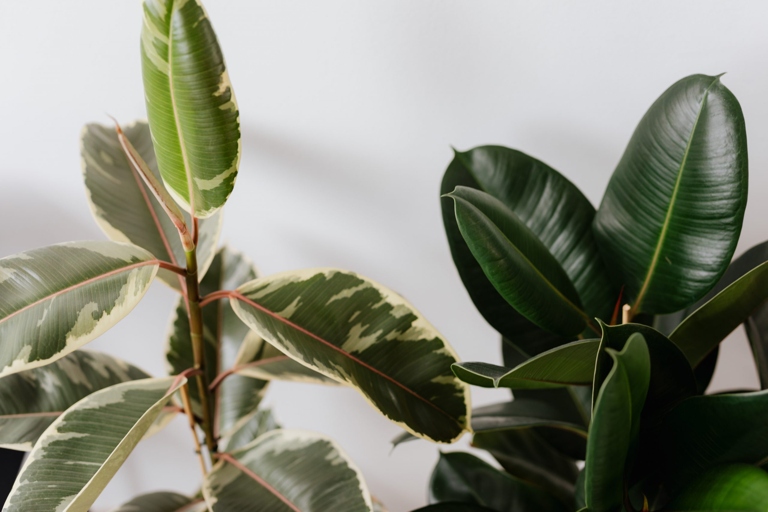
Allow the plant to drain for a few minutes, then discard any water that remains in the saucer. Water your rubber plant deeply and thoroughly, until water runs out of the drainage holes at the bottom of the pot.
If the air in your home is dry, you may need to water your plant more often. Rubber plants are native to tropical climates and prefer warm, humid conditions. You can increase the humidity around your plant by placing it on a pebble tray or grouping it with other plants.
Solution
There are a few simple steps you can take to revive your plant. If your rubber plant is showing signs of underwatering, don’t despair!
If it is, water your plant thoroughly, making sure to evenly moisten the soil. First, check the soil to see if it is dry.
Next, check the leaves of your plant for wilting or yellowing. If they are wilted or yellow, mist them with water to help them rehydrate.
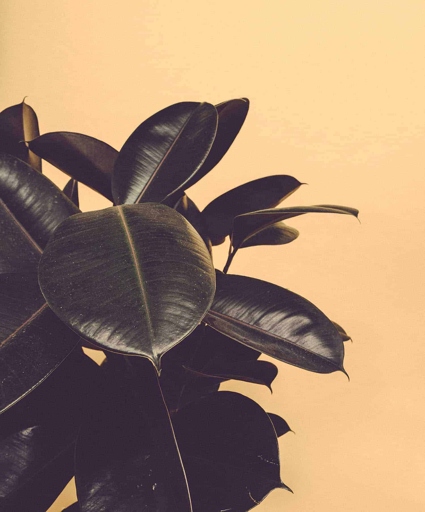
Finally, give your plant some extra TLC by fertilizing it and making sure it has plenty of light. With a little love, your rubber plant will be back to its happy, healthy self in no time!
How to Revive your Underwatered Rubber Plant
Here are some signs to look for: If your rubber plant is looking a little wilted, it may be underwatered.
-The leaves are drooping
-The leaves are yellow or brown
-The plant is wilting
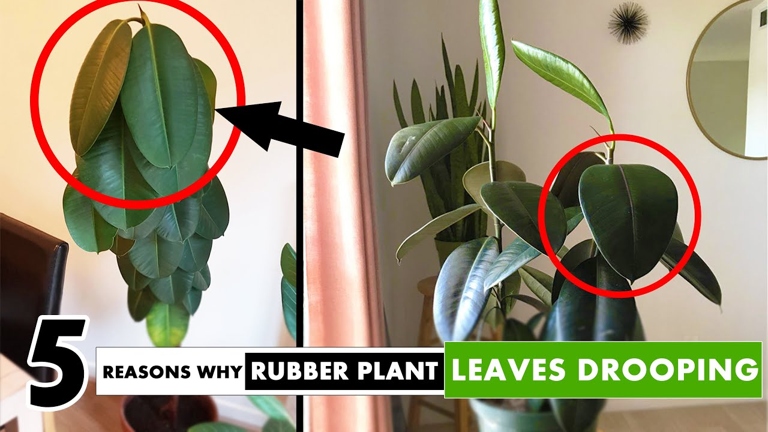
If you think your rubber plant is underwatered, there are some things you can do to revive it.
If it is dry, water the plant. -First, check the soil.
-If the soil is wet, the plant may be overwatered. Allow the soil to dry out before watering again.
This will help the plant focus its energy on new growth. -If the leaves are yellow or brown, you can remove them.
-Finally, give the plant some time. It may take a few days for the plant to recover.
Cut off Severely Affected Parts
This will help the plant to focus its energy on the healthy parts and hopefully revive itself. If the stem is also wilted, you can cut it back to a healthy section. If your rubber plant is severely wilted, it’s best to cut off the affected parts. To do this, simply cut off the affected leaves at the stem using a sharp knife or pruning shears. Once you’ve made your cuts, water your plant well and give it some time to recover.
Using Proper Potting Mix
Be sure to use a potting mix that drains well and doesn’t hold onto too much moisture. If you notice your rubber plant’s leaves drooping and wilting, it’s a sign that the plant is underwatered. The first step to reviving an underwatered rubber plant is to water it thoroughly.

Switch to a lighter potting mix and be sure to water more frequently. If your rubber plant is still wilting after being watered, it’s likely that the potting mix you’re using is too dense and is preventing the roots from getting the oxygen they need. With proper care, your rubber plant will soon be back to its healthy self.
Choose Right Size of Container
But before you give it a drink, make sure you’re using the right size container. If your rubber plant is wilting, it’s likely due to a lack of water.
If the pot is too big, the soil will stay too moist and the roots will start to rot. If the pot is too small, the roots will be constricted and won’t be able to take up enough water to hydrate the plant.
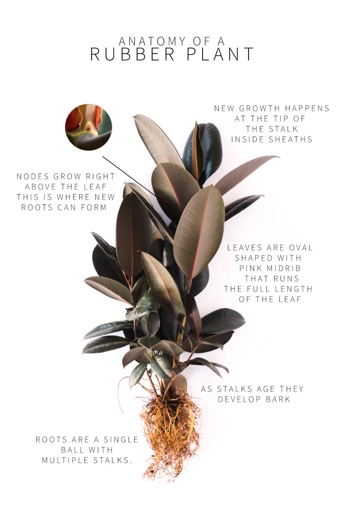
It should fill the pot, but there should be a little room around the edges for the roots to spread out. The best way to determine the right pot size is to look at the root ball.
If it’s dry and crumbly, it needs water. If it’s soggy or mushy, it’s overwatered. If you’re not sure if your rubber plant is underwatered or overwatered, check the soil.
Place The Pot in a Suitable Environment
If it is, then you’ll need to transplant the plant into a larger pot. If you notice any of these signs, it’s important to take action immediately. These signs include wilting, drooping, and yellowing leaves. If it doesn’t, then the plant will continue to experience the signs of being underwatered. When it comes to rubber plants, it’s important to make sure they’re in a suitable environment. The first step is to check the pot to see if it’s too small. If it’s too dry, then you’ll need to water it. Finally, you’ll need to make sure the pot has drainage holes. The next step is to check the soil. If they’re not, they may start to experience some signs of being underwatered.
Follow Watering Regimen
Water your rubber plant deeply, until water runs out of the drainage holes at the bottom of the pot, and then let the plant dry out completely before watering again. If you notice your rubber plant’s leaves turning yellow, it’s a sign of overwatering; make sure to let the plant dry out completely before watering it again. If you notice your rubber plant’s leaves drooping, it’s a sign that it’s thirsty and needs more water. Check the soil before watering to make sure it’s dry; if it’s still moist, wait a few days before watering again.
How Often to the Water Rubber Plant
Allow the water to soak in and then empty the drainage tray. A good rule of thumb is to water the plant when the top inch of soil is dry. How often to water a rubber plant depends on the plant’s size, pot size, type of potting mix, and the temperature and humidity of the room. If you notice your rubber plant’s leaves drooping and curling, it’s a sign that the plant is thirsty and needs more water.
Final Words
When it comes to rubber plants, it’s important to know the signs of an underwatered plant. If you don’t water your plant, it will eventually die. If you see any of these signs, it’s important to water your plant immediately. These signs include wilting leaves, yellowing leaves, and browning leaves.
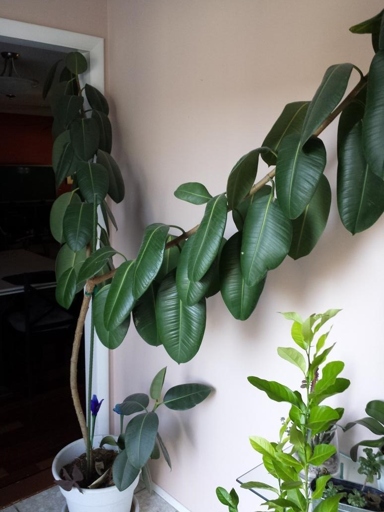
This means that you should water the plant until the water comes out of the drainage holes at the bottom of the pot. This will help prevent your plant from getting too much water, which can lead to root rot. Once you’ve watered your plant, be sure to empty out the saucer or tray that the plant is sitting in. When it comes to watering your rubber plant, it’s important to water it deeply and thoroughly.
If you think that your rubber plant is beyond saving, don’t despair. There are a few things that you can do to revive it. First, you can try giving it a good soaking. Let the plant soak for about 30 minutes, and then drain the water and return the plant to its pot. To do this, water your plant thoroughly and then place it in a sink or tub of lukewarm water.
Be sure to water your plant well after repotting it. Another option is to repot your plant. This can be done by carefully removing the plant from its pot and then placing it in a new pot that is filled with fresh potting soil.
If you follow these tips, you should be able to revive your underwatered rubber plant.
Frequently Asked Questions
1. What are some signs that my rubber plant is underwatered?
If the leaves are drooping or wilting, if the leaves are turning yellow or brown, or if the plant is overall looking wilted, it is likely underwatered.
2. Why does my rubber plant need water?
Water is necessary for the plant to transport nutrients from the soil to the leaves. Without water, the plant will slowly begin to die.
3. How often should I water my rubber plant?
It is best to water your rubber plant once a week, allowing the soil to dry out slightly in between waterings.
4. What happens if I overwater my rubber plant?
If you overwater your rubber plant, the roots will begin to rot, and the plant will eventually die.
5. How can I revive my underwatered rubber plant?
If your rubber plant is underwatered, you can try to revive it by giving it a thorough watering, making sure to saturate the soil. You can also try misting the leaves with water.
Final thoughts
If you think your rubber plant may be underwatered, look for these signs: wilting leaves, dry soil, and yellowing leaves. These are all indicative of a plant that needs more water. To revive your rubber plant, water it thoroughly and then place it in a spot with bright, indirect light. With a little TLC, your rubber plant will be back to its happy, healthy self in no time!
